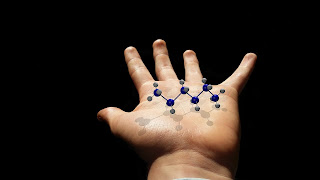What Is VFX?

What's the Difference Between VFX and SFX?
The expression "enhanced visualizations" isn't compatible with the expression "embellishments" (SFX). Not at all like VFX, SFX is accomplished continuously during recording; models incorporate fireworks, counterfeit downpour, animatronics, and prosthetic cosmetics. All VFX are included in the wake of shooting in after creation.
3 Types of Visual Effects
Top enhanced visualizations studios are set up with VFX chiefs and groups of VFX craftsmen who all have their own fortes. Most kinds of VFX fall into at least one of the accompanying classes:
CGI:
Computer-produced symbolism is the sweeping term used to depict carefully made VFX in film and TV. These PC illustrations can be 2D or 3D, yet CGI is commonly referred to when discussing 3D VFX. The most discussed measure in CGI is 3D displaying—the making of a 3D portrayal of any item, surface, or living animal. CGI VFX is most obvious when craftsmen use them to make something that doesn't exist, similar to a mythical beast or beast. Be that as it may, special visualizations can likewise be more inconspicuous; VFX craftsmen can utilize VFX to fill a baseball arena with a horde of cheering fans or de-age an entertainer to cause them to seem more youthful, similar to Robert De Niro in The Irishman coordinated by Martin Scorsese.
Compositing:
Also called "chroma-keying," compositing is when VFX craftsmen join visual components from independent birthplaces to cause it to seem like they are in a similar spot. This enhanced visualization strategy requires shooting with a green screen or blue screen that typesetters later supplant with another component utilizing compositing programming in after creation. An early type of compositing accomplished this impact with matte artistic creations—delineations of scenes or sets that were composited with true to life film. One of the well-known instances of a matte work of art utilized as an optical composite is the Emerald City scene in The Wizard of Oz.
Movement catch:
Often under-staffed as "mocap," movement catch is the cycle of carefully recording an entertainer's developments, at that point moving those developments to a PC created a 3D model. At the point when this cycle incorporates recording an entertainer's outward appearances, it's frequently alluded to explicitly as "execution catch." One regular movement catch technique includes setting an entertainer in a movement catch suit shrouded in uncommon markers that a camera can follow (or on account of execution catch, spots painted on the entertainer's face). The information caught by the cameras is then planned onto a 3D skeleton model utilizing movement catch programming.
1. Take a gander at headshots. Inspect photos or headshots of entertainers, while remembering the kind of look you need for the job. Cooperate with a projecting chief during pre-creation to assist you with your headshot search.
"It's all sound judgment. You need to get the opportune individual for the part. That bodes well, isn't that right? So you can't simply pick anyone. You need the opportune individual—so you have to see pictures, clarify what you found in your brain, the vibe of the entertainer you need. At that point, you clarify how the entertainer is in certain things. Individuals will assist you in discovering pictures of entertainers."
2. Watch the entertainer. Before choosing an entertainer, David Lynch will watch the entertainer talk, and decide by watching their faces, non-verbal communication, and tuning in to how they talk on the off chance that they are the correct entertainer to endure his film. On the off chance that you can picture the entertainer playing out all the subtleties of the whole part in your brain, at that point that is the entertainer you should project for your undertaking. After David discovers pictures of entertainers, he passes by their face, watching them talk about anything:
3. Become more acquainted with the entertainer
. In some cases, entertainers come in and try out for a job they appear to be directly for. Notwithstanding, when you become more acquainted with someone, you may see different prospects, different exhibitions they can do, which might be not quite the same as the job they're trying out for. Numerous entertainers contain an assortment of "layers," and becoming acquainted with your entertainer better can assist you with making sense of how to get to those layers and bring them out without limit, which is perhaps the most ideal approach to locate the correct entertainer for the job.

"I've had encounters where individuals come in and they get the part for a certain something, however in conversing with them, I see that they could do this other thing. At the point when you become more acquainted with someone a smidgen, you see different prospects. At that point, when something comes up, you realize they could do that as well, which is a lot not quite the same as the other thing."
4. Be available to development.
Both during the tryout cycle and recording measure, entertainers ought to be pliable, daring, and comprehend the human condition, and you, as a producer, must be available to perceiving how profound they can go. Focus on any of the extraordinary components that the trying out entertainer can bring to the table, as these might be the specific components your film needs. Each incredible entertainer has an "awful character" they can get to, however, their "awful character" is explicit to them, so locate that extraordinary component inside each character that you can investigate further and help create.
Comments
Post a Comment